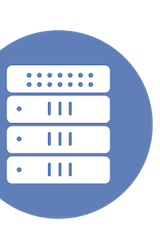|
|
This video is part of the appearance, “Infoblox Presents at Security Field Day 14“. It was recorded as part of Security Field Day 14 at 13:30-15:30 on September 24, 2025.
Watch on YouTube
Watch on Vimeo
Protective DNS is rapidly emerging as a trusted layer of defense across industries. Governments, regulators, and enterprises alike are embracing it as a scalable, proactive way to strengthen security posture. Around the world, governments are looking to adopt Protective DNS to safeguard citizens, while updates to NIST SP 800-81 highlight DNS as a foundational control that can stop threats earlier than other systems—supporting Zero Trust and cyber-resiliency strategies. Industry leaders are also moving fast: Microsoft is embracing Zero Trust DNS to protect devices, and Google Cloud DNS Armor applies DNS-based threat detection to natively secure cloud workloads. Speaker Krupa Srivatsan highlighted this growing adoption by citing a key statistic from a former NSA director stating that 92% of cyberattacks use DNS at some point. She provided several examples of governments implementing national Protective DNS (PDNS) services, including CISA in the U.S. for federal agencies, the U.K. for its public and emergency services, and Australia for its public sector. A notable use case is Ukraine, which deployed a national PDNS service that resulted in a 30-40% reduction in reported financial phishing fraud against its citizens amidst the ongoing conflict.
Srivatsan then discussed the influence of regulatory bodies, focusing on the forthcoming NIST Special Publication 800-81, which centers on DNS security. This guidance is built on three pillars: using Protective DNS to block malicious activity, ensuring DNS hygiene and encryption (like DNSSEC and DNS over HTTPS) to prevent spoofing, and hardening DNS servers against denial-of-service attacks. She connected these principles to the Zero Trust framework, arguing that organizations cannot claim to follow Zero Trust if they implicitly trust their DNS resolver. A true Zero Trust architecture requires not only PDNS and encryption but also a comprehensive asset inventory—a capability inherent to DDI platforms—to apply granular, device-aware security policies.
Finally, she detailed significant adoption by industry leaders. Microsoft’s new Zero Trust DNS feature for Windows 11, for example, will lock down the operating system to only resolve queries through an approved PDNS provider, effectively blocking resolutions to unauthorized domains and hardcoded IP addresses. Similarly, the Google Cloud DNS Armor service natively integrates Infoblox’s threat detection engine directly into the Google Cloud console. In its initial version, the service analyzes DNS logs to detect threats and reports them to Google’s security tools, providing preemptive security for cloud workloads without requiring customers to deploy a separate solution. These initiatives by Microsoft and Google signal a major industry shift towards embedding Protective DNS as a foundational security control.
Personnel: Krupa Srivatsan









